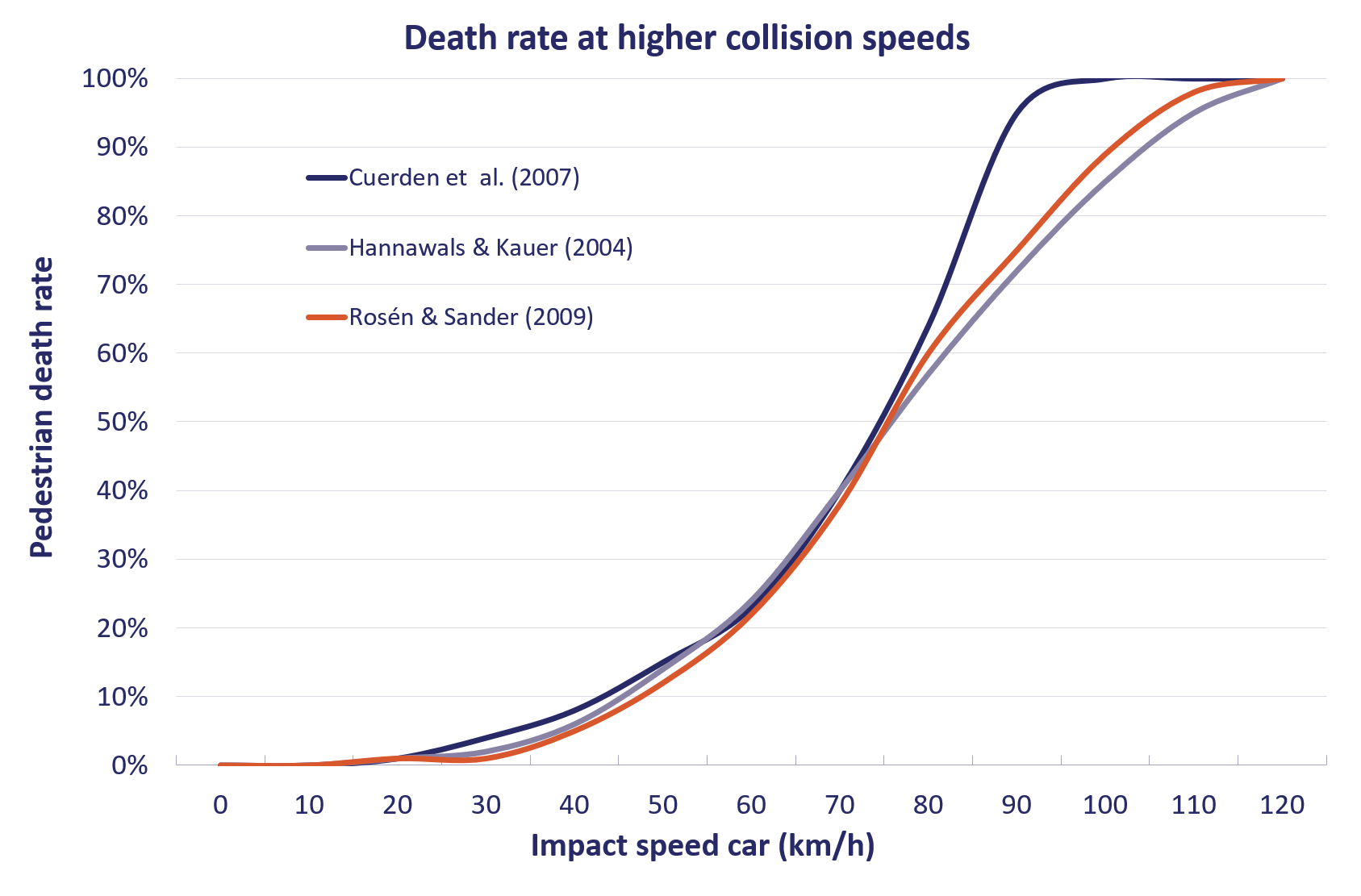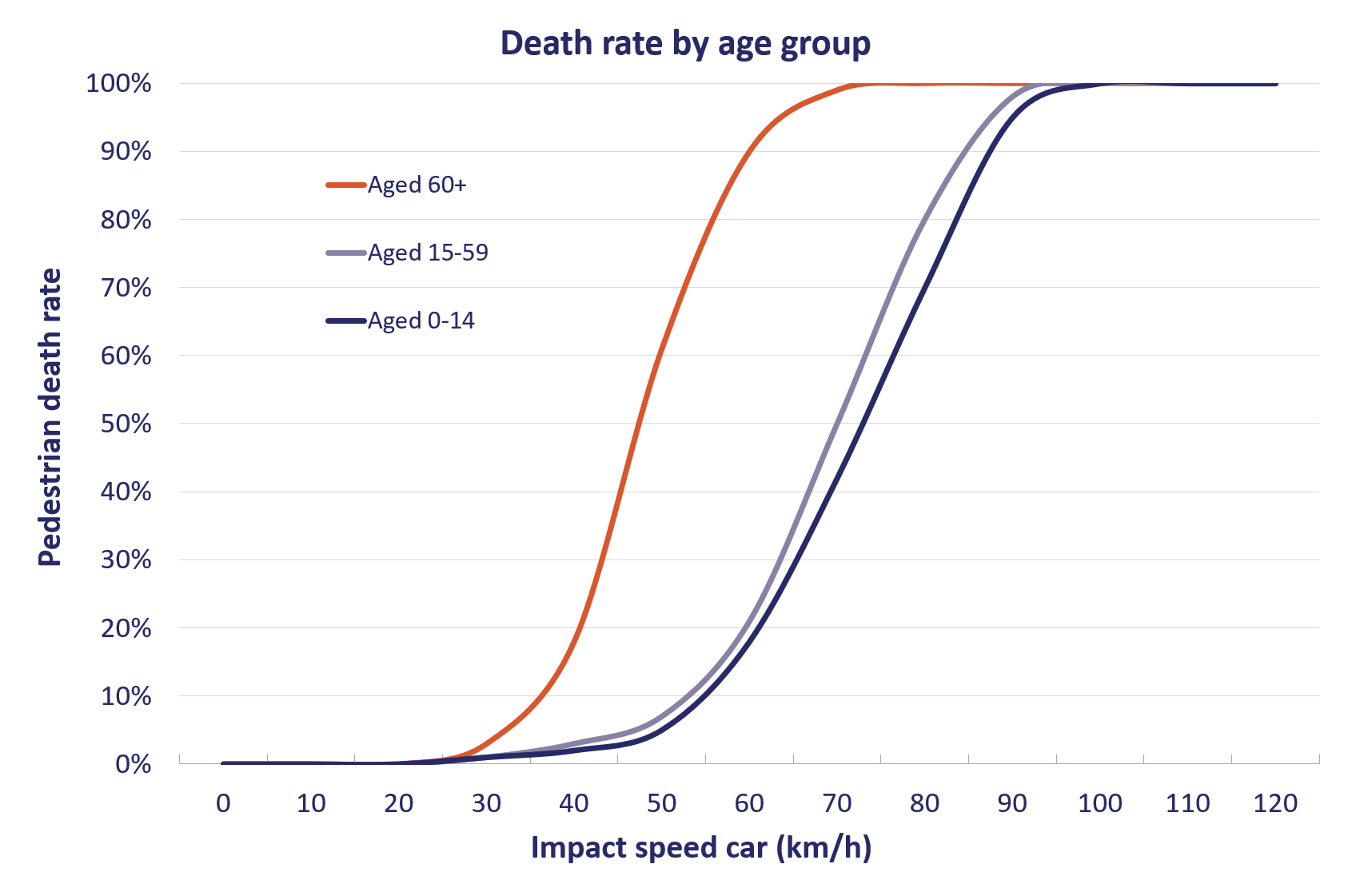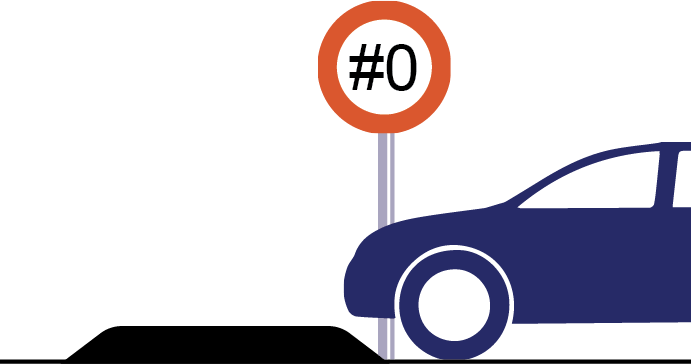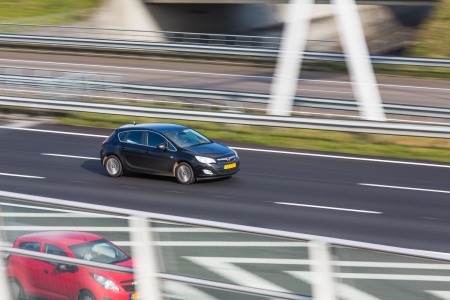Below you will find the list of references that are used in this fact sheet. All sources used can be consulted or retrieved.
[1]. Nilsson, G. (1982). The effects of speed limits on traffic accidents in Sweden. In: Proceedings of the international symposium on the effects of speed limits on traffic accidents and transport energy use. 6-8 October 1981, Dublin. OECD. p. 1-8.
[2]. Aarts, L. & Schagen, I. van (2006). Driving speed and the risk of road crashes: a review. In: Accident Analysis & Prevention, vol. 38, nr. 2, p. 215-224.
[3]. Elvik, R. (2009). The Power Model of the relationship between speed and road safety: update and new analyses. TØI Report 1034/2009. Institute of Transport Economics TØI, Oslo.
[4]. Elvik, R. (2013). A re-parameterisation of the Power Model of the relationship between the speed of traffic and the number of accidents and accident victims. In: Accident Analysis & Prevention, vol. 50, p. 854-860.
[5]. Wickens, C.D. & Horrey, W.J. (2008). Models of attention, distraction, and highway hazard avoidance. In: Regan, M.A., Lee, J.D. & Young, K.L. (red.), Driver distraction: Theory, effects, and mitigation. CRC Press, Taylor & Francis Group, Boca Raton, Florida, p. 57-69.
[6]. Rogers, S.D., Kadar, E.E. & Costall, A. (2005). Gaze patterns in the visual control of straight-road driving and braking as a function of speed and expertise. In: Ecological Psychology, vol. 17, nr. 1, p. 19-38.
[7]. Holocher, S. & Holte, H. (2019). Speeding. ESRA2 Thematic report Nr. 2. ESRA project (E-Survey of Road users’ Attitudes). Federal Highway Research Institute, Bergisch Gladbach, Germany.
[8]. Aarts, L.T., Schepers, J.P., Goldenbeld, C., Decae, R.J., et al. (2020). Achtergronden bij De Staat van de Verkeersveiligheid 2020. De jaarlijkse monitor [Backgrounds of the State of Road Safety 2020. The annual monitor]. R-2020-27A [Summary in English]. SWOV, Den Haag.
[9]. Adminaité-Fodor, D. & Jost, G. (2019). Reducing speeding in Europe. PIN-flash report 36. European Transport Safety Council (ETSC), Brussels.
[10]. Duijm, S., Kraker, J. de, Schalkwijk, M., Boekwijt, L., et al. (2012). PROV 2011 Periodiek Regionaal Onderzoek Verkeersveiligheid – Bijlagenrapport. Rijkswaterstaat, Dienst Verkeer en Scheepvaart, Delft.
[11]. Rudin-Brown, C.M. (2004). Vehicle height affects drivers’ speed perception: Implications for rollover risk. In: Transportation Research Record, vol. 1899, nr. 1, p. 84-89.
[12]. OECD/ECMT (2006). Speed management. Organisation for Economic Co-operation and Development OECD/European Conference of Ministers of Transport ECMT, Paris.
[13]. Cameron, M.H. & Elvik, R. (2010). Nilsson's Power Model connecting speed and road trauma: Applicability by road type and alternative models for urban roads. In: Accident Analysis & Prevention, vol. 42, nr. 6, p. 1908-1915.
[14]. ITF (2018). Speed and crash risk. IRTAD Research Report. International Transport Forum, ITF/OECD, Paris.
[15]. Elvik, R., Vadeby, A., Hels, T. & Schagen, I. van (2019). Updated estimates of the relationship between speed and road safety at the aggregate and individual levels. In: Accident Analysis & Prevention, vol. 123, p. 114-122.
[16]. Solomon, D. (1964). Accidents on main rural highways related to speed, driver and vehicle. Bureau of Public Roads, U.S. Department of Commerce. United States Government Printing Office, Washington, D.C.
[17]. Kloeden, C., McLean, A.J. & Glonek, G. (2002). Reanalysis of travelling speed and the rate of crash involvement in Adelaide South Australia. Report No. CR 207. Australian Transport Safety Bureau ATSB, Civic Square, ACT.
[18]. Kloeden, C.N., McLean, A.J., Moore, V.M. & Ponte, G. (1997). Travelling speed and the rate of crash involvement. Volume 1: findings. Report No. CR 172. Federal Office of Road Safety FORS, Canberra.
[19]. Kloeden, C.N., Ponte, G. & McLean, A.J. (2001). Travelling speed and the rate of crash involvement on rural roads. Report No. CR 204. Australian Transport Safety Bureau ATSB, Civic Square, ACT.
[20]. Taylor, M.C., Lynam, D.A. & Baruya, A. (2000). The effects of drivers’ speed on the frequency of road accidents. TRL Report, No. 421. Transport Research Laboratory TRL, Crowthorne, Berkshire.
[21]. Tejero, P. & Chóliz, M. (2002). Driving on the motorway: the effect of alternating speed on driver's activation level and mental effort. In: Ergonomics, vol. 45, nr. 9, p. 605-618.
[22]. Rosén, E., Stigson, H. & Sander, U. (2011). Literature review of pedestrian fatality risk as a function of car impact speed. In: Accident Analysis & Prevention, vol. 43, nr. 1, p. 25-33.
[23]. CROW (2012). Basiskenmerken wegontwerp: categorisering en inrichting van wegen. Publicatie 315. CROW, Ede.
[24]. SWOV (2018). Sustainable Safety 3rd edition – The advanced vision for 2018-2030. Principles for design and organization of a casualty-free road traffic system. SWOV, The Hague.
[25]. Schagen, I.N.L.G. van, Wegman, F.C.M. & Roszbach, R. (2004). Veilige en geloofwaardige snelheidslimieten. Een strategische verkenning [Safe and credible speed limits. A strategic exploration]. R-2004-12 [Summary in English]. SWOV, Leidschendam.
[26]. Aarts, L., Pumberger, A., Lawton, B., Charman, S., et al. (2011). Road authority pilot and feasibility study. Deliverables 3 and 4 of the ERASER project. SWOV, Leidschendam.
[27]. Wegman, F. & Aarts, L. (2006). Advancing Sustainable Safety; National Road Safety Outlook for 2005-2020. SWOV, Leidschendam.
[28]. Schagen, I. van & Feypell, V. (2011). Speed and speed management for road safety. An overview of the findings of the OECD Working Group on speed management. In: Twisk, D. & Nickel, W.R. (red.), Fit to Drive: Proceedings of the 5th International Traffic Expert Congress. April 6th-8th 2011, The Hague. Kirschbaum Verlag.
[29]. CROW (2014). Richtlijn drempels, plateaus en uitritten. CROW, Ede.
[30]. Schagen, I. van, Commandeur, J.J.F., Goldenbeld, C. & Stipdonk, H. (2016). Monitoring speed before and during a speed publicity campaign. In: Accident Analysis & Prevention, vol. 97, p. 326-334.
[31]. Knaap, P. van der (2021). Verkeer is ‘gedrag’, maar verkeersveiligheid is méér dan ‘gedrag’. De effecten van voorlichting en educatie worden makkelijk overschat zolang goede evaluatie uitblijft. In: Verkeerskunde, vol. 72, nr. 2, p. 18-19.
[32]. SWOV (2019). Verhoging snelheidslimiet op autosnelwegen. Veiligheidseffecten 130km/uur-limiet vooralsnog niet eenduidig. R-2019-30. SWOV, Den Haag.
[33]. SWECO (2019). Verkeersveiligheidsanalyse snelheidsverhoging autosnelwegen, 2007-2017. Sweco Nederland, De Bilt.
[34]. Vis, A.A. & Kaal, I. (1993). De veiligheid van 30 km/uur-gebieden. Een analyse van letselongevallen in 151 heringerichte gebieden in Nederlandse gemeenten [Safety of 30 km/h areas. An analysis of injury accidents in 151 reorganized areas in Dutch municipalities]. R-93-17 [Summary in English]. SWOV, Leidschendam.
[35]. Weijermars, W.A.M. & Schagen, I.N.L.G. van (2009). Tien jaar Duurzaam Veilig. Verkeersveiligheidsbalans 1998-2007 [Ten years of Sustainable Safety. Road safety assessment 1998-2007]. R-2009-14 [Summary in English]. SWOV, Leidschendam.
[36]. Steinbach, R., Perkins, C., Edwards, P., Beecher, D., et al. (2016). Speed cameras to reduce speeding traffic and road traffic injuries. Cochrane Injuries Group, London School of Hygiene & Tropical Medicine, London.
[37]. Høye, A. (2014). Speed cameras, section control, and kangaroo jumps–a meta-analysis. In: Accident Analysis & Prevention, vol. 73, p. 200-208.
[38]. Lai, F., Carsten, O. & Tate, F. (2012). How much benefit does Intelligent Speed Adaptation deliver: An analysis of its potential contribution to safety and environment. In: Accident Analysis & Prevention, vol. 48, p. 63-72.
[39]. Ryan, M. (2018). Intelligent Speed Assistance. A review of the literature. Irish Road Safety Authority.
[40]. Pas, J.W.G.M. van der, Kessels, J., Veroude, B.D.G. & Wee, B. van (2014). Intelligent speed assistance for serious speeders: The results of the Dutch Speedlock trial. In: Accident Analysis & Prevention, vol. 72, p. 78-94.
[41]. CROW (2015). Basiskenmerken kruispunten en rotondes. Publicatie 315A. CROW Kenniscentrum voor verkeer, vervoer en infrastructuur, Ede.
[42]. Hourdos, J., Liu, Z., Dirks, P., Liu, H.X., et al. (2017). Development of a queue warning system utilizing ATM infrastructure system development and field-testing. Minnesota Department of Transportation.
[43]. Lint, H. van, Nguyen, T.T., Krishnakumari, P., Calvert, S.C., et al. (2020). Estimating the safety effects of congestion warning systems using carriageway aggregate data. In: Transportation Research Record, vol. 2674, nr. 11, p. 278-288.
[44]. Sanden, K. van der, Kooi, F., Alferdinck, J., Bijl, P., et al. (2021). Maximumsnelheden in signaalgevers: Perceptie-onderzoek. TNO 2021 R10138. TNO in opdracht van Rijkswaterstaat, Soesterberg.
[45]. Janssen, C., Donker, S., Hessels, R., Hooge, I., et al. (2021). De invloed van frequente aanduiding van maximumsnelheid boven de weg op het gedrag van de weggebruiker: Literatuuronderzoek. Universiteit Utrecht in opdracht van Rijkswaterstaat, Utrecht.
[46]. Varotto, S.F., Jansen, R., Bijleveld, F. & Nes, N. van (2021). Driver speed compliance following automatic incident detection: Insights from a naturalistic driving study. In: Accident Analysis & Prevention, vol. 150.
[47]. Blom, M., Blokdijk, D. & Weijters, G. (2017). Recidive na een educatieve maatregel voor verkeersovertreders of tijdens een Alcoholslotprogramma. Cahier 2017-15. Wetenschappelijk Onderzoek- en Documentatiecentrum WODC, Den Haag.
[48]. Phillips, R.O., Ulleberg, P. & Vaa, T. (2011). Meta-analysis of the effect of road safety campaigns on accidents. In: Accident Analysis & Prevention, vol. 43, nr. 3, p. 1204-1218.
[49]. Bax, C., Goldenbeld, C., Petegem, J.W.H. van, Mons, C., et al. (2019). Evaluatie buurtacties in 30km/uur-straten; Verkeersveiligheidsgevoelens, motivatie en gereden snelheden onderzocht in vijf gemeenten. R-2019-4. SWOV, Den Haag.
[50]. Groot-Mesken, J. de & Vlakveld, W.P. (2014). Een duwtje in de goede richting - verkeersveilig gedrag : hoe kan verkeersveiligheidsbeleid profiteren van inzichten rondom automatische gedragsbeïnvloeding? [A nudge in the right direction: safe traffic behaviour. How can road safety policy benefit from knowledge about automatic behaviour change?] R-2014-13 [Summary in English]. SWOV, Den Haag.
[51]. Goldenbeld, C., Groot-Mesken, J. de & Temürhan, M. (2017). Nudging van rijsnelheid via Dick Bruna-borden: een veldexperiment. De effecten op werkelijk gereden snelheden in vijf gemeenten onderzocht [Nudging driving speed using Dick Bruna traffic signs: a field experiment. Study of the actual speeds driven in five municipalities in the Netherlands]. R-2017-11 [Summary in English]. SWOV, Den Haag.
[52]. Ljung Aust, M., Baldanzini, N., Bakker, B., Berghaus, M., et al. (2020). Final Measures; Deliverable D5.5 of the H2020 project MeBeSafe. European Commission, Brussels.

 Figure 1. The share of vehicles exceeding the speed limit on the secondary road network (Source: Kijk in de Vegte & Hovestad, 2019; in:
Figure 1. The share of vehicles exceeding the speed limit on the secondary road network (Source: Kijk in de Vegte & Hovestad, 2019; in:  Figure 2. Percentage of Dutch drivers giving these motives for speeding in 2011, by road type
Figure 2. Percentage of Dutch drivers giving these motives for speeding in 2011, by road type  Figure 3. Percentage of Dutch drivers giving these motives for respecting speed limits in 2011, by road type
Figure 3. Percentage of Dutch drivers giving these motives for respecting speed limits in 2011, by road type 
 Figure 4. The relationship between impact speed and pedestrian death rate in a collision with a passenger car (Source: [
Figure 4. The relationship between impact speed and pedestrian death rate in a collision with a passenger car (Source: [ Figure 5. The relationship between impact speed and pedestrian death rate for different age groups when colliding with a passenger car (Davis, 2001; in
Figure 5. The relationship between impact speed and pedestrian death rate for different age groups when colliding with a passenger car (Davis, 2001; in 

















